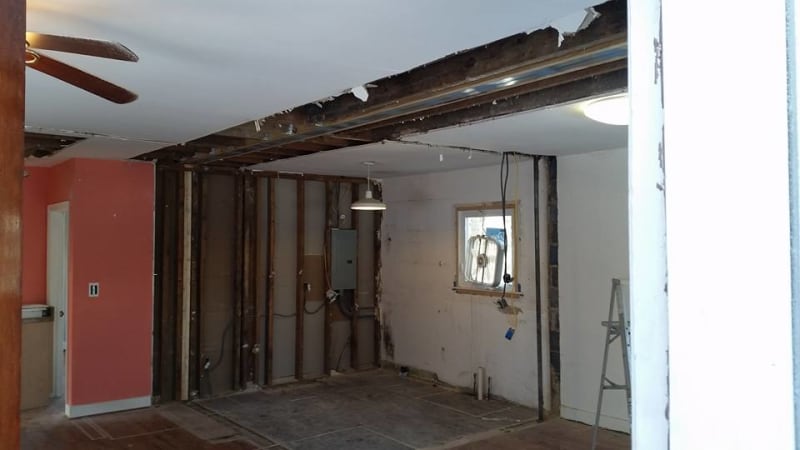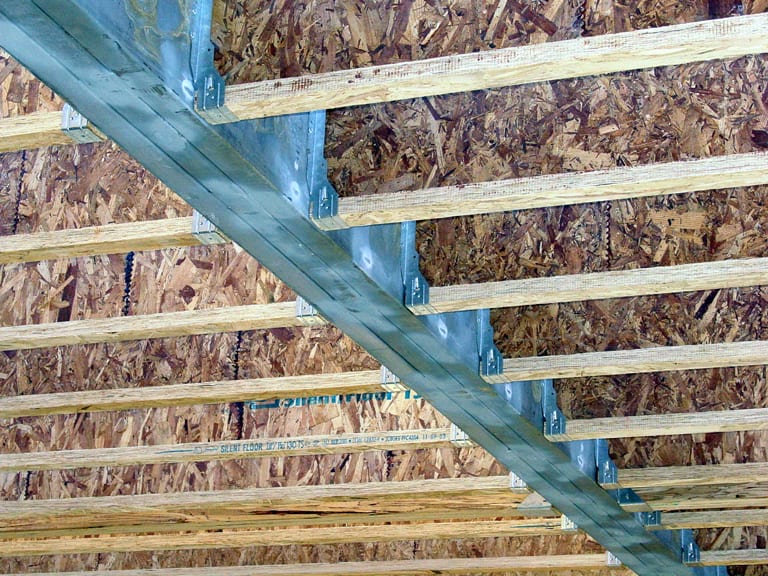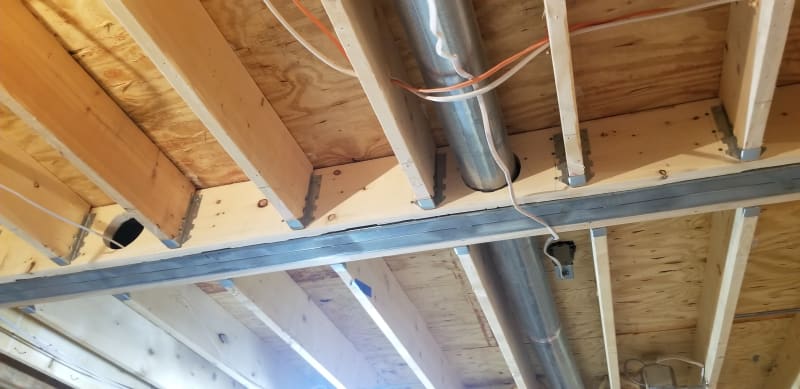I'm currently sizing a beam to take out a load bearing wall in my own home (to open up between the kitchen and dining room) and have a couple questions about how you size for deflection limits when removing an existing wall, on new construction we size for live load deflection as the dead load deflection wont effect the finishes, but since this is a finished structure should I size the beam to deflection from the combined load, otherwise when we put up the beam and remove the supports the beam will deflect and the upper floor will settle from the dead load deflection and could mess up some finishes or the levelness of the floor above. The span is 16'-6", and it will support a bathroom on one side with a 14' joist span and a bedroom on the other with a 12' joist span, so the tributary width is 7' from the bathroom and 6' from the bedroom, also there is a partition wall that is not load bearing above the existing load bearing wall.
I am getting a live load of 460plf and a total load (live + dead of) 745plf with everything considered (40psf LL bathroom, 30psf LL bedroom, 15psf deadload both in case we ever switch to porcelain wood look tile in the bedroom, plus a few other loads we have), I'm winding up with a 14" or 16" in parallam beam, which I likely won't do because it's 2x8 framing on the floors and we don't want the beam sticking down that far. The limiting factor is deflection limits, not moment or shear. So the question become because it's a long span with tile above in the bathroom do I use L/480 or L/600, and do I use live load deflection or total deflection, L/480=.415" L/600=.33 inches, I'm worried if I size for live load when we remove the supports any settling will disturb the floor above.
Am I being grossly over conservative by sizing for L/600 for total load deflection. Since it's my own home I don't want any chance of the floor bouncing or settling, the house was already built cheap by the builder in the 80's and I'm been improving everything in it as I've been living there.
It seems no matter what I'll have a little of a bump down in the ceiling where the beam is as it's only 8" framing and I'll have to go with a W8 of some weight. I don't mind sizing it a size up as I will be supplying and furnishing the steel myself, just curious for any input as I don't really do any residential work.
I am getting a live load of 460plf and a total load (live + dead of) 745plf with everything considered (40psf LL bathroom, 30psf LL bedroom, 15psf deadload both in case we ever switch to porcelain wood look tile in the bedroom, plus a few other loads we have), I'm winding up with a 14" or 16" in parallam beam, which I likely won't do because it's 2x8 framing on the floors and we don't want the beam sticking down that far. The limiting factor is deflection limits, not moment or shear. So the question become because it's a long span with tile above in the bathroom do I use L/480 or L/600, and do I use live load deflection or total deflection, L/480=.415" L/600=.33 inches, I'm worried if I size for live load when we remove the supports any settling will disturb the floor above.
Am I being grossly over conservative by sizing for L/600 for total load deflection. Since it's my own home I don't want any chance of the floor bouncing or settling, the house was already built cheap by the builder in the 80's and I'm been improving everything in it as I've been living there.
It seems no matter what I'll have a little of a bump down in the ceiling where the beam is as it's only 8" framing and I'll have to go with a W8 of some weight. I don't mind sizing it a size up as I will be supplying and furnishing the steel myself, just curious for any input as I don't really do any residential work.



